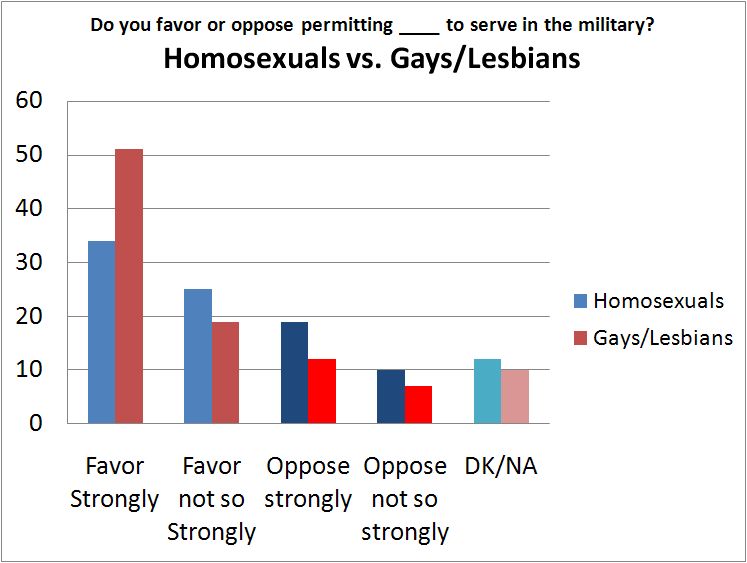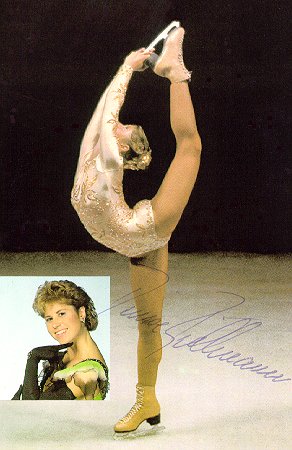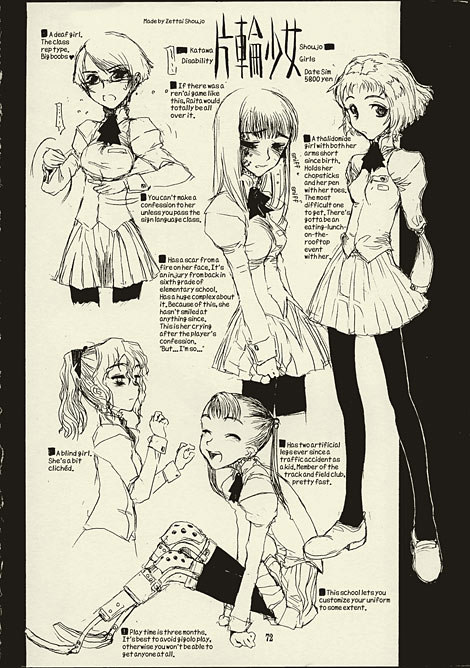A recent CBS/New York Times poll reveals how words matter. They asked 500 respondents how they felt about permitting “homosexuals” to serve in the military; then they asked a different 500 how they felt about “gays/lesbians” serving in the military. It turns out, people like gays and lesbians more than they like homosexuals:
Also in words: frankenfoods, atomic, soda vs. pop, tradition, hispanic, feminism, woman, average, nurse, George Lakoff on metaphor, professional, Jon Steward on re-branding, development, organic, the third world, man vs. girl, natural, honorifics, Africa, dithering, terrorism, the rape and other violent metaphors, and flesh-colored.
And also see our post on the war against “gay.” (Poll discovered via Montclair SocioBlog.)
Lisa Wade, PhD is an Associate Professor at Tulane University. She is the author of American Hookup, a book about college sexual culture; a textbook about gender; and a forthcoming introductory text: Terrible Magnificent Sociology. You can follow her on Twitter and Instagram.






